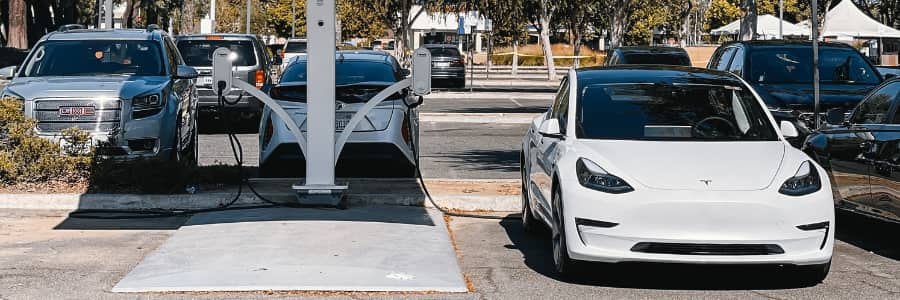Four different types of charging solution with specific advantages and disadvantages dominate the market. Find out which one suits you best and how to charge your electric car as cheaply as possible.
As a new or prospective electric car owner, there is plenty to keep an eye on. One of the most important things to be aware of is how to charge your electric car.
Overall, there are four different options, each with their own advantages. Get an insight into which one suits you best in our mini guide.

Three parameters in particular have a great influence on which charging solution will suit your needs and your situation:
Driving needs: This is perhaps the most important thing to get a handle on. It determines how often your electric car must be charged, how much your total electricity consumption is, and where you can charge the electric car.
Outside or at home: Whether you can – and want to – leave outside or at home also plays a big role.
Last but not least, it is important to think about how intelligently you can do the charging. This is, among other things, in relation to minimizing the price per charge.
At the end of the article, you will find a number of links to calculators which, among other things, use these parameters to calculate which charging solution is best for you.
But before jumping to the calculation of the optimal charging solution, it may be worth understanding the basic types of solutions.

Dear child has many names, this also applies to electric car charging. While definitions and details vary widely, there are generally four different types of charging solutions:

As mentioned, several things impact which charging solution suits you best.
For example, a charging box with or without a service agreement is suitable for most people. If you have a small driving need, there may be advantages in choosing a charging box without a service agreement. On the other hand, without a service agreement, there is no access to a tax refund on the electricity used to charge the electric car. But if you have a heat pump, geothermal heating and the like, you still don’t have access to tax refunds with the vast majority of providers.
Tax refunds will change from January 2023, which may impact your situation as an electric car owner. Read more about what is happening and what it could mean for you here.
Adding an electric car can significantly increase the home’s total electricity consumption – and through that your total energy bill. Therefore, if you have a large driving need, a subscription solution can often be advantageous.
The exact calculation depends on your specific situation. That’s why we’ve put together several sources and online calculators that you can use to get clarity on what suits you best:
Elberegner.dk
FDM
Intelligent utilization of fluctuating electricity prices
The best prices for electricity change from hour to hour and from day to day. They can occur while you are sleeping or for other reasons do not have time to deal with your charging.
If you invest in your own charging box, with or without a service agreement, it is therefore a good idea to investigate how you can take advantage of fluctuating electricity prices.
This is some of what you can achieve via True Energy’s app. The app connects your charging box, your electric car and any Smart home devices together and can automatically and intelligently determine when they use electricity.
The calculation constantly monitors electricity prices and CO2 emissions from electricity production, so you can set the charging of the electric car to be as cheap and climate-friendly as possible. True Energy takes care of the rest.
Is your EV not charging as expected? See our checklist for ways to improve charging speeds.
EV battery losing charge? You might be suffering from vampire drain – see how to combat it here.